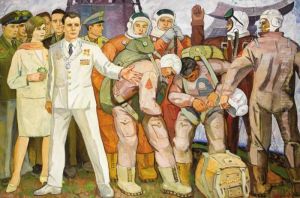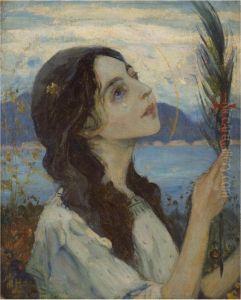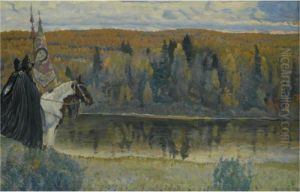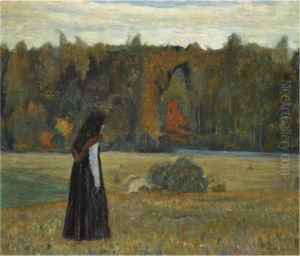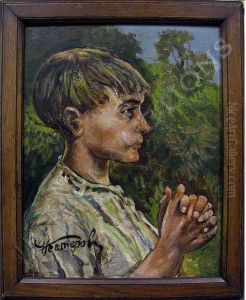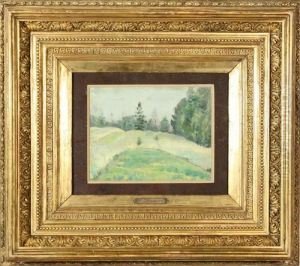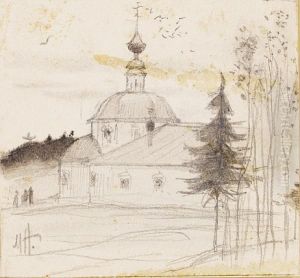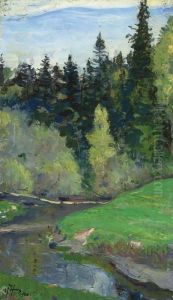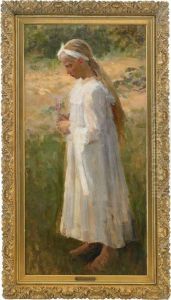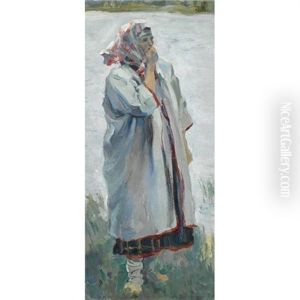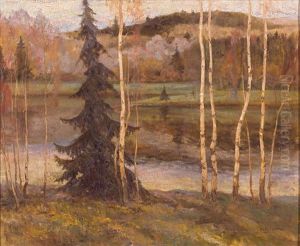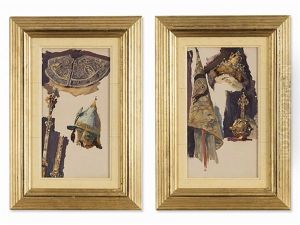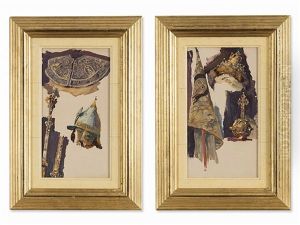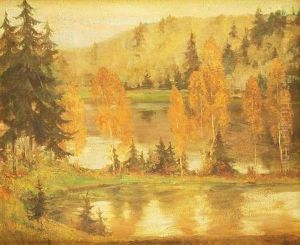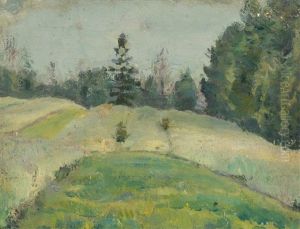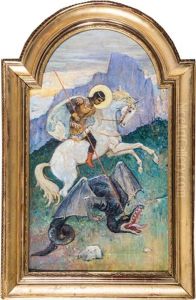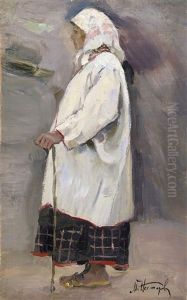Mikhail Vasilievich Nesterov Paintings
Mikhail Vasilievich Nesterov was a Russian artist, born on May 31 (O.S. May 19), 1862, in Ufa, to the family of a small merchant. He is regarded as a major representative of religious Symbolism in Russian art and was also associated with the Peredvizhniki (Itinerant) movement. Nesterov's upbringing in the Ural region of Russia, which is known for its scenic landscapes and deeply spiritual communities, significantly influenced his artistic direction.
Early on, Nesterov demonstrated artistic talent and was enrolled at the Moscow School of Painting, Sculpture and Architecture. He later continued his studies at the Imperial Academy of Arts in Saint Petersburg. It was during his time in Moscow that Nesterov began to formulate his distinctive style that combined realistic portrayals of the Russian landscape with a profound sense of spirituality and mysticism.
Nesterov gained fame with his work 'The Hermit' in 1889, and 'The Vision to the Youth Bartholomew' in 1890-1891, which depicted the young Bartholomew (the future St. Sergius of Radonezh) experiencing a religious vision. These works established his reputation as a painter of religious and philosophical subjects. Throughout his career, Nesterov sought to express the spiritual and moral concerns of his time, focusing on themes of faith, introspection, and the search for moral values.
Nesterov remained active in his artistic pursuits even after the October Revolution, though his faith-based subject matter was at odds with the Soviet regime's secularist policies. Despite this, he managed to continue working, adapting to the changing times by focusing on portraiture and landscape painting, while subtly maintaining his spiritual and symbolic undertones.
During his later years, Nesterov faced personal tragedies, including the loss of his daughter and his wife, which deeply affected him. He was evacuated to Ufa during World War II, where he died on October 18, 1942. His body of work left a lasting impact on Russian art, and he is remembered for his unique ability to capture the essence of the Russian soul through his contemplative and mystical depictions.
